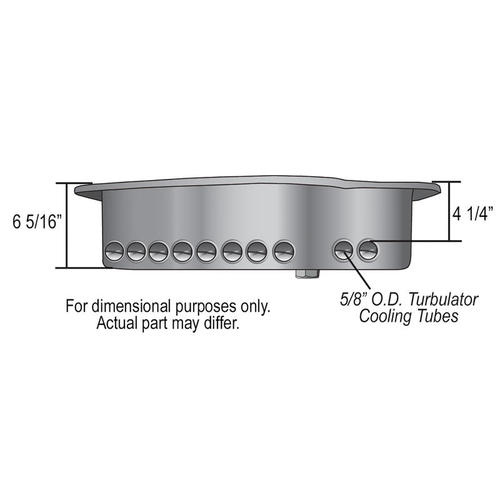

5R110W TRANSMISSION PAN UPGRADE UPGRADE
If you’re into an upgrade for your 5R110W, you can go as cheap as you want and only do a few things to the trans itself, or you can really get advanced and turn your upgrade into an expensive and heavy multi-part package upgrade. The 5R110W has a ton of upgrade potential and being almost 20 years old, it’s been experimented with in virtually countless ways over the years. You can test your solenoids by taking off the electrical connections and measuring the resistance (Ohms) between the two pins.įor mechanical issues with clutches, gear sets, and solenoids, make sure to have your mechanic (or do it yourself if you are one) carefully check out these components, as they’re going to wear out over time. If you find a lot of metallic clutch substances and metal filing substances, it might be good to run some more diagnostics on your transmission.

You can do this by draining your trans fluid and transmission fluid and removing your trans oil pan. It’s important to consistently check your solenoids. Because of constant use, most non-mechanical problems you might encounter with the 5R110W will have to do with these solenoids or sensors. Instead of a hydraulic-controlled shift setup, the PCM engages shifts and commands line pressure by using these electronic-shift solenoids. The 5R110W is special in the sense that it does not have a typical valve body, but uses what is called a “solenoid body” which contains a group of seven different electronic-shift solenoids.
5R110W TRANSMISSION PAN UPGRADE CODE
Unless a product maker indicates that it can, it’s best to assume that whatever code-reader you’re using will not have the ability to receive code data from your 5R110W. Keep in mind that most code-readers don’t have the ability to identify codes used by the 5R110W transmission. Sometimes, an engine problem can seem like a transmission problem this is why it’s important to rule out an issue as an engine issue before immediately trying to diagnose a transmission issue in case there isn’t one. Electrical issues might include things like a solenoid that isn’t carrying a charge or working like it’s supposed to, problematic or completely-missing inputs from a sensor or multiple sensors, and so on. Mechanical issues the 5R110W might experience include things like stuck solenoids, worn-out clutches, dysfunctional or heavily damaged gear sets, and so on. Issues common to the 5R110W can generally be described in terms of either purely mechanical problems or electrical problems. The transmission’s somewhat smaller 4th gear can be used in colder temperatures to boost higher speeds, helping the transmission to warm up faster. A different shift sequence is engaged when outside temperatures drop below 5° F, in which case the sequence becomes 1st-2nd-3rd-4th-6th. In typical operations, it shifts 1st-2nd-3rd-5th-6th. The 5R110W transmission is billed as a 5-speed, although it really has 6 forward speeds. Its use was kept with the birth of the 6.4L Power Stroke in the 2008 model year and stopped with the intro of the 6.7L Powerstroke in 2011, which utilized the more advanced 6R140 TorqShift trans. The TorqShift itself is a diesel transmission and intimately connected to the engine. The 5R110W “TorqShift” transmission as it’s known was introduced to the world along with the 6.0L PowerStroke diesel in 2003. The 5R110W is in the eyes of many essentially a rebuild of Ford’s 4R100 automatic transmission. 3.7 / 5 ( 4 votes ) The 5R110W transmission specifications


 0 kommentar(er)
0 kommentar(er)
